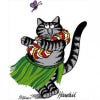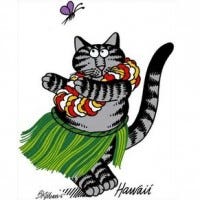Making of Super Mega Baseball No.6 – Tobyn
This is the 6th post in a series about the making of Super Mega Baseball, covering the first new member of the team - a veteran artist - and all the beauty he brought to the game.

-- This is the 6th post in a series about the making of Super Mega Baseball, interviewing the founders - Scott & Christian. This post was copied over from our blog. --
It was three years into the making of Super Mega Baseball before Scott and Christian added their first new team member. And with the help of Tobyn, they saw some pretty big and immediate changes…
|
|
Before Tobyn (BT) | After Tobyn (AT) |
|
|
Liane: How did you meet Tobyn?
Scott: I can’t remember exactly how we found it, but Tobyn was putting on a little get-together lunch thing and we decided to go. And it was a gang of like 6 or 7 local game developers. We met Tobyn and he was doing some of his own games at the time. And we got a pretty good idea - quickly - that he was very talented.
Liane: How did you pay him?
Scott: This was a point at which we recognized that our original plan, and our mechanism to get through two years, was not going to work. And it was time to venture into debt. So we started borrowing some money from family. And, you know, I don’t think we had an idea of how much we were ultimately going to borrow to get the game done, but we got started with an amount that would allow us to do some real art.
Christian: I was fairly horrified to even borrow the amount that we did to make this happen, because like, we had no industry contacts really, we were - for all practical purposes - still working on a tech demo with no real path to revenue at all. There was still a very long way from where we were at to this thing making any sort of revenue at all. I was pretty horrified of borrowing money at this point.
Scott: Even though I didn’t believe it at the time, looking back there was a very high probability that the money we were borrowing was never going to get paid back. At least not through Metalhead. But we would have paid it back through doing something else, to be clear there.
Liane: What was it like having Tobyn in for the first few weeks?
Christian: It. Was. Awesome.
Scott: Magical. Art getting done three times as fast, three times better.
Christian: Yeah, it was really, really, really amazing cause he’s been using 3ds Max for his entire professional career, as far as I know. He’s been doing video game art for his entire professional career, and he’s very good at what he does. So, he comes in and he just gets an amazing amount of stuff done. He comes in and looks at the stuff we have and he’s like “okay, you guys could really, really use my help here” and he went to town. It was awesome.
Scott: I was becoming very familiar with the toolset. Not just from the perspective of making art, but also from an art pipeline perspective. Having learned the basic inner workings of 3ds Max, and then watching someone who was a massive pro at it, was very cool to see. Very fun to watch, very fun to watch him work.
Christian: And I can remember the first time we actually paid him being an emotional moment. 'Cause it was the first time that our little company had like, remunerated somebody for useful work done for this company, which was pretty awesome, honestly.
Here is some of the first work Tobyn did on the stadiums.







Liane: What were the most notable changes when he first started?
Scott: It was really fun sitting down and coming up with what was ultimately gonna be this international theme. Parks that weren’t too out there, from an architectural perspective. Like they were almost conceivable from a baseball perspective and architecture perspective, but still a pretty fictional place. It was really fun coming up with those ideas with Tobyn and then actually having the early prototypes and art come together. And it happened pretty quick. I mean, we did definitely put on some layers of polish years later, but the initial gist of what the ballparks were gonna look like was really put together in a very short span there.
Christian: And I just remember him looking at the players and being like “can I have a crack at trying to come up with a few different models and a different set of heads here?” And I think it took him about a week and a half and he had all of the heads and all of the bodies, which at the time were still very unpolished, but they definitely set the tone for what the final characters looked like.
Scott: And one more interesting thing about that stepping stone art-wise is that the character heads there, they still didn’t have openable mouths. Instead of having lips glued onto their face like the previous characters, they had kind of these modelled lips, but they didn’t have mouths that could be opened, they didn’t have teeth. And that came a lot later.
Christian: And it ended up being a huge upgrade, visually, once we did that.
Here are some photos of the characters after Tobyn came on board:




Since this post is all about Tobyn and the magic he brought to the team, it seemed appropriate to bring Tobyn into the discussion and get his perspective on those early days.
Liane: Tobyn, what was it like jumping into this art style and doing characters?
Tobyn: My background is in level art. And I had made two of my own games with my own company. But my character art is not super-strong, so I was learning to do character art as I was going along. The art style was also…quite different from anything I was used to. They showed me their wonderful picture of Hammer Longballo, which I think they covered in a previous episode. And they said “okay make it like this” and I said “really…?” And so I tried to get more out of them about what kind of art they were into. And also, finding an art style is great but they also wanted to have customizable characters and that’s pretty difficult to do. Also, we didn’t know how long I was going to be there for so it was tough working with that constraint. As a result I had to take the skeleton that was already there for that character and build around it with a new kind of character. Yeah it was tough, but they were just so open to whatever I needed to do and they wanted to solve problems for me so I could just get down to making the art.
And he certainly made a huge difference:



Liane: So I hear you didn’t think the existing character art was good?
Tobyn: *Laughter* * Bigger laughter* You already knew I was gonna say that? I think the first time we met they were telling me about how they wanted to do their art style. And how they were considering that they didn’t really need to have an art style per se. They just wanted sort of blobby characters and they were saying “you know South Park, it’s a very, very simple style, and you don’t necessarily think of that as an art style.” And I remember thinking, I think I even said it to them, “even South Park has got a certain amount of art style to it and you need to think about all these things.” Quite frankly I’m amazed at how much Scott did with the little art that he knew. He made an incredible stadium and he did really well with the animation. So it was sort of picking up in the spots that Scott didn’t have yet. It was an interesting challenge…dot dot dot…
Liane: What did you think the odds were of this game ever getting published?
Tobyn: I was pretty sure it was going to get released, for sure. It was a long project, so you always just wonder when it’s gonna get done. I knew it was gonna get done, it was just going to take a long time, that’s all, because it’s a big ambitious project. Yeah and I wasn’t surprised, absolutely not surprised that it was gonna get published. I was surprised at the quality level at the end. It was really good quality for a few guys, who were super determined, but who hadn’t made a game before.
Liane: I think they were expecting you to say ‘no way’.
Tobyn: Oh really? No, no I knew for sure that it was gonna get published. Their determination was just so there and absolute.
Liane: Did you think it would be successful?
Tobyn: I had no idea what the reception was going to be like, because I don’t play baseball games. And it’s not my genre, not my thing. I love games, I play whatever is put in front of me and I think it’s great. I thought their approach to trying to find a niche in the games industry was really smart. And I didn’t know what the marketplace was like for sports games, so I couldn’t predict that at all. But I knew there would be a certain subset who wanted more baseball games, and who wanted to play as much as they could.
Liane: I have no more questions, but is there anything else that you wanted to add?
Tobyn: I could do lots of patting on backs, but I don’t know quite if that’s what this is about. Yeah I think a lot of the difficulties I ran into and still think about how they could have gone better were about the fact that we didn’t know how long I was going to be there for. And I had to leave things always in a state that Scott could pick it up and finish it himself. And that’s not easy to do, you know. It’s hard to make calls on things when you don’t know how long you’re gonna be able to take charge of them. I always wanted to leave things in their hands, how they wanted to do them, and I think it worked out because we definitely could see eye-to-eye on a lot of things. But it was always a challenge. And I think the results turned out really well.
I think so, too! Here is more of Tobyn's early work:











With Tobyn's help, the game was looking better and ready for its debut in the world of video game pitches -- but we'll get to that in our next post. For now, leave your questions in the comments section!
-- This post was copied over from our blog. --
Read more about:
BlogsAbout the Author(s)
You May Also Like












